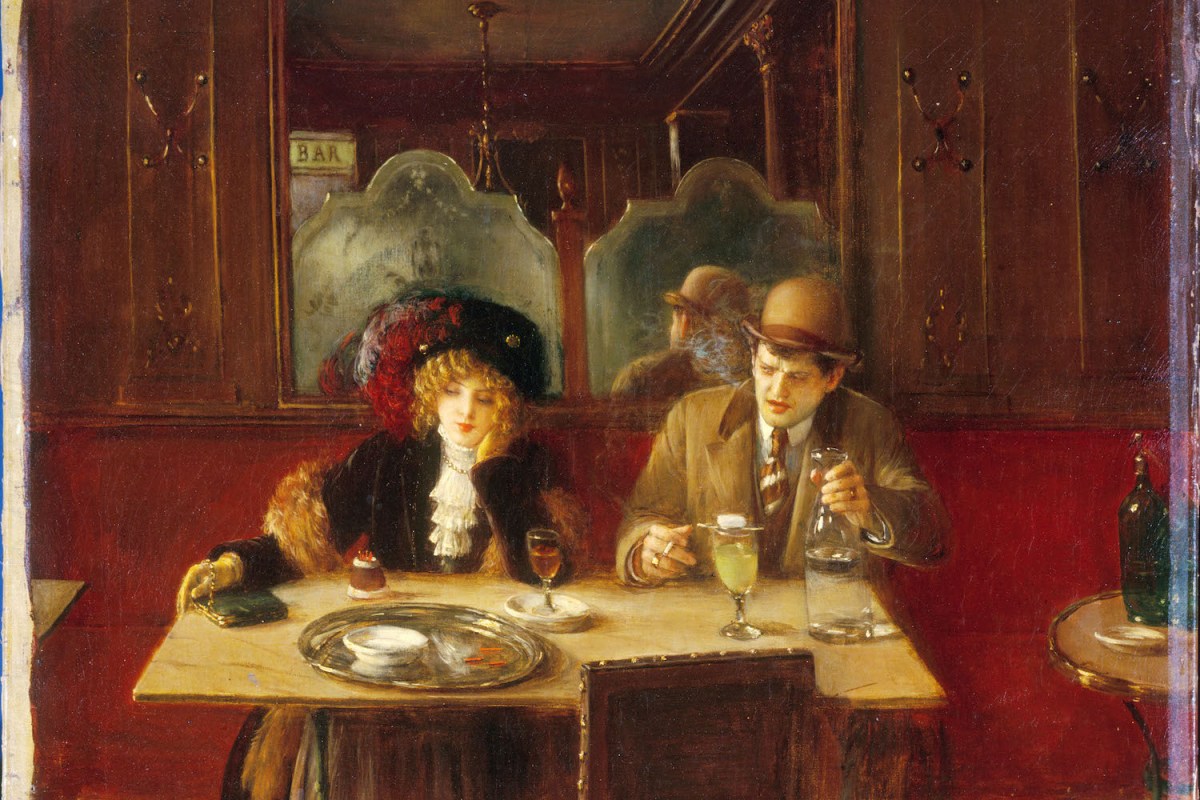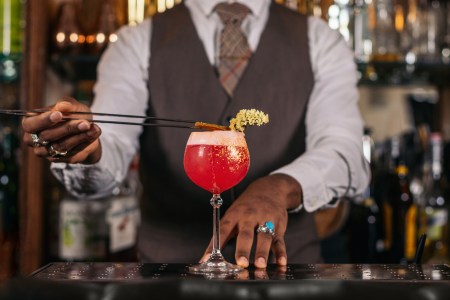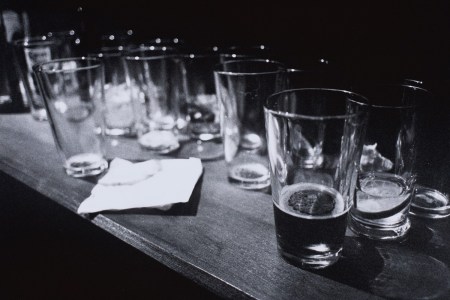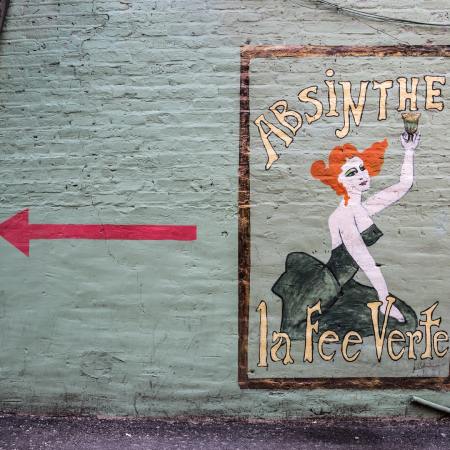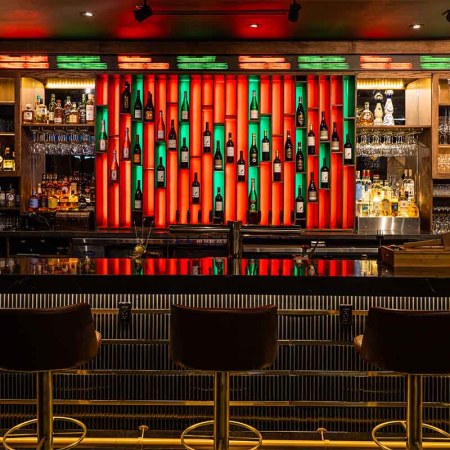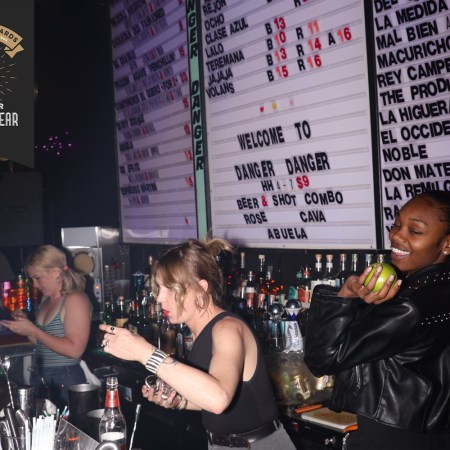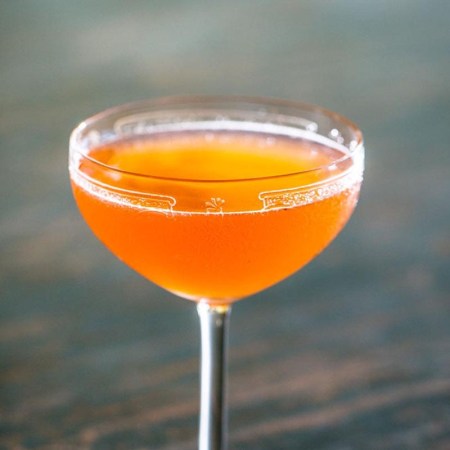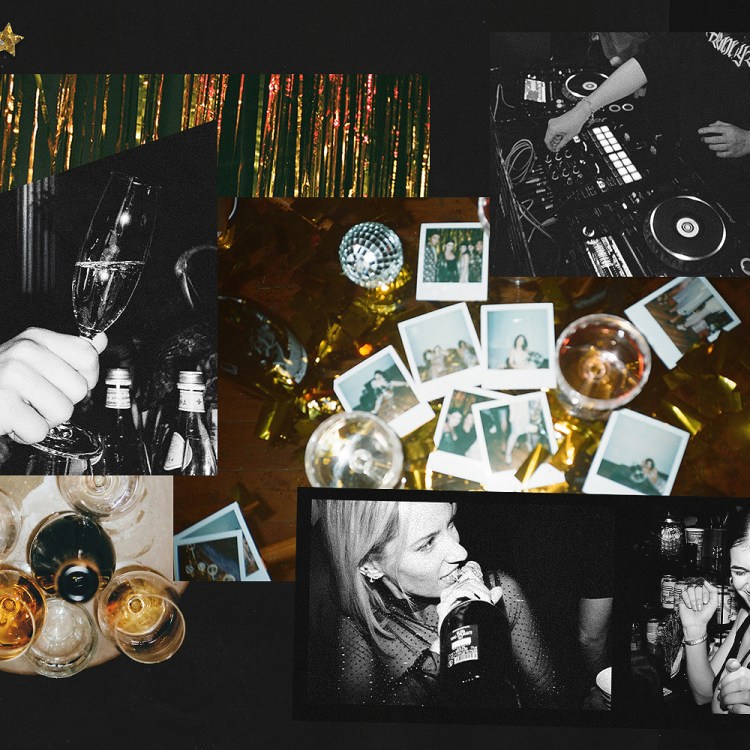When you think of absinthe, what comes to mind? Perhaps impressionist painters, the Belle Époque, Edouard Degas’s “In a Café” (The Absinthe Drinker), Henri Toulouse-Lautrec’s cane hollowed out for vials of the Green Fairy. Maybe it’s Ernest Hemingway and a Death in the Afternoon, the cocktail of Champagne and absinthe he created for his book of the same name in 1932. Or perhaps it’s your own college-era fascination with the neon green drink, so “dangerous” it was illegal in the United States because it would make you hallucinate.
For all the important ties absinthe has to art and literature, what’s nearly always shouted loudest and remembered longest is its supposed threat — its more-drug-than-alcohol properties, it being banned for a century. Lately, however, absinthe has been enjoying a small but steady burst of interest. Bars are devoting their menus to it, or at least boasting large collections; cocktails like Death in the Afternoon are reappearing; secret societies, meet-up groups and events centered around it are popping up. Could we finally see an era of true understanding, accurate information and genuine appreciation for absinthe?
What nearly every absinthe evangelist wants to squash first is the myth behind absinthe’s ban. In the 1860s and ‘70s, an insect called phylloxera decimated French vineyards, wiping out the supply of the most commonly preferred beverage in Europe and much of the United States — wine. No grapes meant no brandy, too. In America, most people turned to what they could find at home. “That’s the reason Americans don’t drink brandy cocktails, they drink whiskey cocktails,” says Eric Stashak, bar manager of San Francisco’s Absinthe Brasserie & Bar.
But in Europe, many imbibers reached for the drink already popular with Parisian artists: absinthe. “People switched from lower-ABV wine to higher-ABV absinthe but drank the same amount,” Stashak says. Widespread intoxication became a problem, as did dubious entrepreneurs looking to cash in with cheap, adulterated absinthe products, which could explain the hallucination element. But a panic was born. Many became convinced absinthe’s defining ingredient of wormwood — specifically because of a compound it contains, thujone — could ruin drinkers’ physical and mental health. Governments, as well as wine companies once their grape supplies recovered, wanted to drive this fear home to banish the collective absinthe habit for good.
In Doctors and Distillers: The Remarkable Medicinal History of Beer, Wine, Spirits, and Cocktails, Camper English writes of experiments done on guinea pigs, injecting them with wormwood essences and allowing them to die to prove the herb’s danger. It was later concluded that these animals were subjected to the equivalent of 730 liters of prepared absinthe, so not exactly an accurate representation. “You can get more thujone eating a bushel of sage than drinking a case of absinthe,” says Nate Newbrough, head distiller at Great Lakes Distillery in Milwaukee.
The nail in absinthe’s coffin was the murder case of a Swiss man named Jean Lanfray, whose lawyers claimed he killed his family after drinking two glasses of absinthe and blacking out. They did not mention the copious amounts of other alcoholic beverages Lanfray drank daily. Switzerland banned absinthe in 1910, Netherlands in 1909, the United States in 1912 and France in 1915.
Should We Really Stop Garnishing Our Cocktails?
Those little bits of fruits and herbs are driving a sustainability debate, but they’re also an integral part of many mixed drinksMore recently, absinthe’s illegality in the States inspired curiosity among young imbibers. T.A. Breaux is a scientist and founder of absinthe distillery, Jade Liqueurs, who helped get the American ban on absinthe lifted. He recalls seeing “fake-sinthe” in places like Prague, where American college kids and tourists would snatch up the “mouthwash-looking stuff.” It was sold for next to nothing there and marked up in the United Kingdom, another place that hadn’t banned absinthe. Americans smuggled these poor approximations of absinthe home and ended up helping substantiate two myths at once: one, that absinthe was more dangerous than other drinks. Bottles were often sold with pandering labels reading “Caution: Hallucination,” Breaux says. “You get someone who’s 19 years old, they take a shot of 70% alcohol and don’t hallucinate, and what do they do? Take another, and another.” Two: that absinthe didn’t taste good. These simulacra tasted like “bad vodka,” Breaux adds.
Breaux had started collecting authentic vintage absinthes in the 1990s, and says that, as a research scientist, he “couldn’t believe the mystery around [absinthe] and that no one had resolved the truth.” In June of 2000, he became the first person to analyze vintage absinthe using modern science. He worked with researchers and published peer reviews and was able to demonstrate to the TTB (Alcohol and Tobacco Tax and Trade Bureau) that in reality, there was absolutely nothing dangerous about absinthe.
The ban was finally lifted in 2007, but strangely, it’s like the word never fully spread among American imbibers. “People come in all the time and say, ‘Wow, you have real absinthe?’” Stashak says. “We say, ‘Yes, it has been legal for 16 years.’”
Newbrough has seen similar reactions at Great Lakes. “You have to get the public out of their clutch-my-pearls mode,” he says.
Rhys Osborne is the founder of an invite-only absinthe experience called Bedroom 6, based in New York and Los Angeles. He, too, still finds guests under the impression that absinthe is illegal or dangerous. “Absinthe is well known to most people as closer to a drug than alcohol,” he says. “Within drinks journalism and the hospitality industry, we often assume, ‘Well, people surely don’t still think that?’ But no, being at a Bedroom 6 event and having 60 strangers come to the table every night, you find out quickly how many people still have those misconceptions.”
Even as people like Breaux, Stashak, Newbrough and Osborne work to get the word out about absinthe’s total safety and legality, there’s a flavor hurdle. But that challenge is quickly fading, according to writer Camper English. “When it came back onto the U.S. market, a lot of people had no idea what it would taste like, and a lot of them found the anise notes not to their liking,” he says. “Now not only is a new generation trying absinthe for the first time a bit further removed from that hype, people’s palates have changed and they’re drinking more flavorful beverages than they were in 2007, things like mezcal and amari.”
Breaux agrees, recalling that when Jade launched its first absinthe Lucid in 2007, the beverage alcohol market wasn’t exactly a welcoming space for it. More recently, vodka has been surpassed by agave spirits case volume-wise in North America, Breaux points out. “We’re seeing now a shift toward stronger flavors, Italian-style amaro, agave spirits, whiskeys — it opens the door to so much more in the cocktail realm and also favors absinthe,” he says. Essentially, the youngest generation of drinkers doesn’t have the flavor hang-ups of older imbibers; in fact, they are more driven by flavor than spirit category preferences and are open to experimenting. And older generations are increasingly overcoming their biases to also explore these bigger flavors and traditional spirits.
American Beer Consumption Reached Its Lowest Level Since 1999
It’s an odd time for the beer worldIn addition to education about absinthe’s safety and growing flavor open-mindedness, a third factor helping the spirit grow is the culture around it. Speaking of those Gen Z drinkers, they’re the ones primarily driving this movement.
Take Bedroom 6, which was started by Gen Z-er Osborne and caterers primarily to his generation. The Bedroom 6 experience is an evening of select guests getting a coveted invite and bringing a friend or two to a then-disclosed location. Every hour, Osborne and company pick random groups of 18, splitting up friend groups, for 20-minute presentations of the traditional absinthe process. People watch their absinthe’s preparation, water dripping from the six spigots of an elegant fountain into glasses with slotted spoons of sugar over them to finish the absinthe with a hint of sweetness (not necessary for all absinthes, Osborne notes, but it’s a time-honored ritual). It’s not just about drinking but about learning and connecting with others. In that way, absinthe lends itself perfectly to the way Gen Z wants to approach imbibing, and that could help absinthe reach a bigger American audience than ever before.
“The reaction around absinthe is generally, ‘I thought it was going to taste bad,’ or ‘I thought it I was going to hallucinate and have an insane night, but in reality, I made seven new friends and tried something I hadn’t before,’” Osborne says of the fan base growing through Bedroom 6. “We’re living in a time, especially post-Covid, where meeting people is really hard.” Young people need to invest in creating safe social spaces for face-to-face connection. The ritual of absinthe brings people together, introduces them to others and makes drinking a more mindful experience. Osborne compares it to a Japanese tea ceremony. There’s patience, education and intention behind every glass.
“Trends change, with people drinking this or that, and absinthe just seems to a big thing now,” says Erin Aubert, the bar manager at The Old Absinthe House in New Orleans. While the bar’s been a destination for the absinthe-curious and aficionados for around 150 years and Aubert has seen absinthe’s sales remain steady in her seven years on-and-off working there, lately she says they have trouble keeping absinthe in stock. “The younger generation is more into different ways of expanding their minds, not just sitting at the bar getting wasted. Absinthe is gaining where other liquors are losing…they want the whole ceremony part of it. They have the absinthe and they’re done, they just want a water or a THC seltzer, not 10 shots of Jäger.”
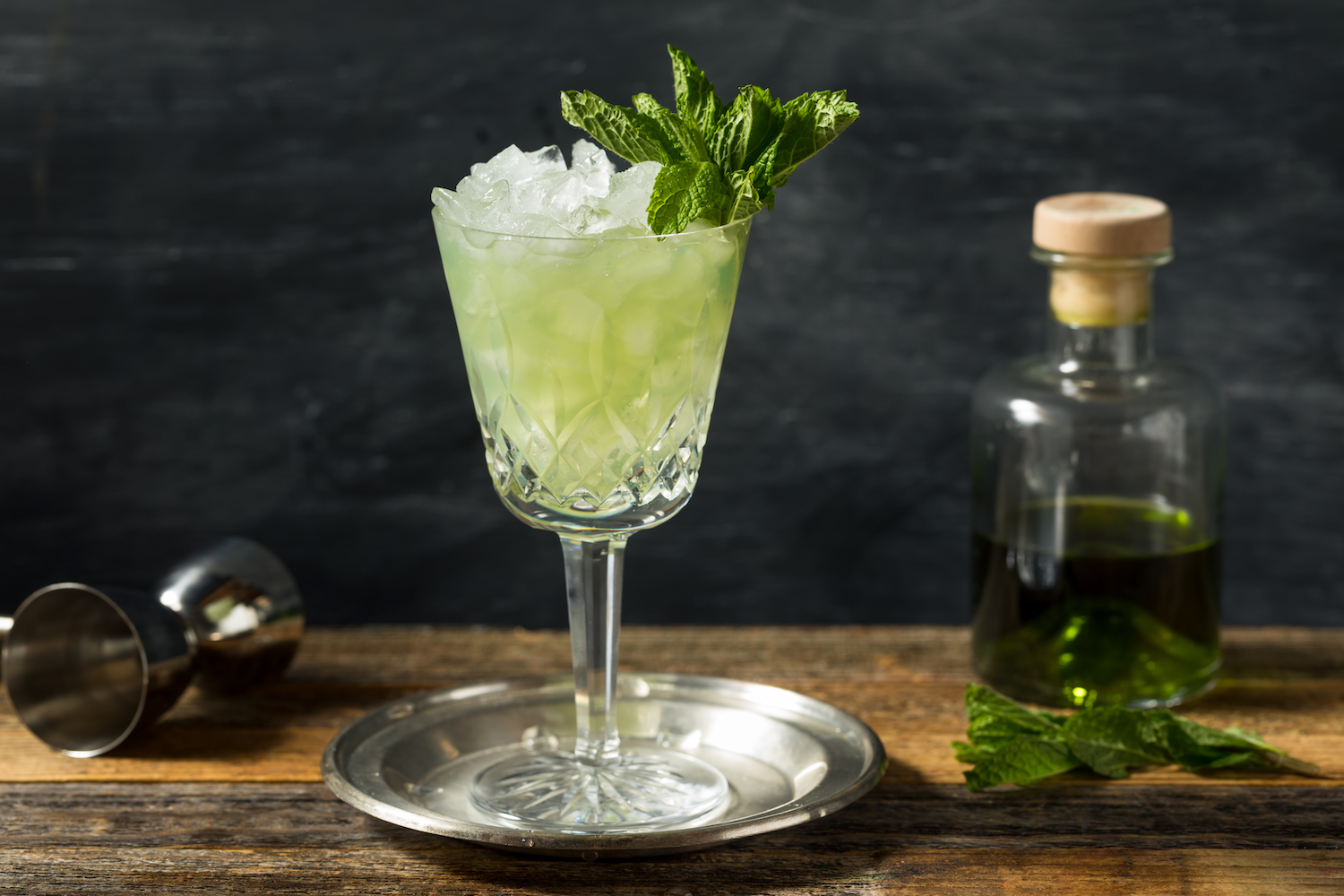
Of, course The Old Absinthe House represents a rare absinthe oasis in the United States, where the spirit has always been embraced. The 1806 building has been a bar since 1843, and in 1872 it was renamed The Absinthe Room (it would become The Old Absinthe House in 1890). Bartender Cayetano Ferrer brought a love of absinthe from Spain, introduced the service method of the slow water drip and invented the still-popular Absinthe House Frappe. The bar’s life span means it not only survived Prohibition where all alcohol was banned, but the much longer period in which absinthe was illegal. In the true bohemian, beat-of-its-own-drum spirit of New Orleans, The Old Absinthe House carried on anyway. The bar skirted Prohibition with a speakeasy operation, and as far as the 95-year absinthe ban, Herbsaint helped. The anise-flavored liqueur was created in New Orleans in 1934 as an absinthe substitute; it did not contain the ingredient that had steered the panic-fueled ban, wormwood. Aubert says patrons can still opt for the frappe with Herbsaint.
“I’m from here, and New Orleans has always been an outlaw-type city,” Aubert says. “We do things the way we want — the city’s been run by pirates. Absinthe is that type of spirit — it’s complex and kind of mythical. It makes total sense it would be a big deal here.”
English sees the New Orleans-absinthe connection as logical, too, thanks to the city’s French ties. “They also have a history drinking other French spirits there, like Benedictine and Peychaud’s bitters in the Sazerac, along with absinthe,” he says. Of course, absinthe’s interest in the United States throughout the past century has always thrived among subcultures who identify with rebelling against societal norms or with less mainstream belief systems or more creative life approaches. “You’d find absinthe fans in groups like Burning Man attendees, hacker- and DIY-types all along, and I’m seeing it in a lot of the new witchcraft/paganism/folk magic communities now,” he adds.
Absinthe’s rumored hallucinogenic properties locked it out of the zeitgeist for decades but simultaneously, along with its longstanding connection with art, secured its place in the hearts of misfits and bohemians. Now, at long last, a little bit of education is going a long way, helping the average alcohol consumer overcome both absinthe’s misconceptions and its anise-forward flavor profile. With the embrace of absinthe culture and its mindful service now sparking intrigue in Gen Z imbibers, too, absinthe is finally moving closer to center stage in American beverage alcohol. Here’s what you need to know to do your own absinthe exploration.
Absinthe’s ABV can range from about 45% to 74%; American craft examples like those from Great Lakes are 63%, Philadelphia Distilling 60% and Stoutridge Distillery 68%. There’s absinthe verte, the green version that’s best known. Well-made iterations get their color naturally from the chlorophyll of the different botanicals. Traditionally, it includes anise, wormwood and fennel, and distillers can add other botanicals common for absinthe, like hyssop and lemon balm, or riff with other choices. There’s also absinthe rouge, which gets its color from hibiscus, and absinthe blanche, which is absinthe without the second botanicals steep that provides absinthe verte with its signature color.
There are plenty of cocktails in which you can enjoy absinthe, from The Old Absinthe’s frappe (absinthe, simple syrup, soda water, chipped ice), to the aforementioned Death in the Afternoon, to the Sazerac (rye whiskey, Peychaud’s bitters, sugar, water and an absinthe rinse). And new cocktails being created every day in absinthe-appreciating bars like Absinthe Brasserie & Bar and New York’s Apotheke. But if you’re just getting to know absinthe, nothing can replace fully experiencing it on its own, especially considering its ritual element. As Aubert says in regard to first-timers at the bar, “You’re at The Old Absinthe House, have absinthe, don’t mix it. Just dive in.”
Every Thursday, our resident experts see to it that you’re up to date on the latest from the world of drinks. Trend reports, bottle reviews, cocktail recipes and more. Sign up for THE SPILL now.
